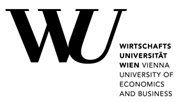Working Papers,
Vienna University of Economics and Business Research Group: Growth and Employment in Europe: Sustainability and Competitiveness
Direct Versus Indirect FDI: Impact On Domestic Exports And Employment
Christian Bellak () and Wilfried Altzinger ()
Additional contact information
Wilfried Altzinger: Department of Economics, Vienna University of Economics & B.A.
Abstract: One of the specific characteristics of Austrian Foreign Direct Investment (FDI) abroad is that a large part is carried out by firms, which themselves are affiliates of foreign Multinational Enterprises (MNEs). Such investment is termed indirect FDI in order to distinguish it from direct FDI, made by Austrian-owned firms. The objective of this paper is to analyse, whether the relatively better domestic employment performance of domestic firms (direct FDI) compared to foreign-owned firms (indirect FDI) can be linked to FDI abroad. Based on an analysis of the sales and trade structure of a sample of Austrian investors in Central and East European Countries (CEECs), this paper tests the hypothesis that these two groups of investors have different motives to invest in CEECs and therefore their activities in CEECs differ by type (sales affiliate, production abroad) and consequently the employment effects at home. Regression results confirm that direct FDI are more strongly determined by labour costs and exhibit an employment pattern related to a deeper international division of labour (including production), while indirect FDI is based relatively more on market seeking investment. Empirical results also confirm that employment effects at home differ. The positive (negative) effect of one additional unit of parent (affiliate) sales on domestic employment for indirect FDI compared to direct FDI is larger (smaller). The - despite this empirical fact - relatively better domestic employment performance of direct FDI is explained by their superior sales performance, resulting from restructuring their international division of labour.
Keywords: Foreign Direct Investment November 1999
Note: PDF Document
Full text files
gee!wp09.pdf
- Vienna University of Economics and Business Research Group: Growth and Employment in Europe: Sustainability and Competitiveness
- Home page for this series
Report problems with accessing this service to Sune Karlsson ().
RePEc:wiw:wiwgee:geewp09This page generated on 2024-09-13 22:20:03.

